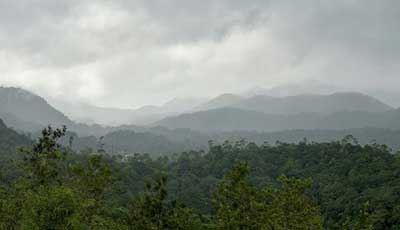Date: 28/04/2023
Relevance: GS-3: Conservation, environmental pollution and degradation, environmental impact assessment.
Key Phrases: Supreme Court, Eco-Sensitive Zones, Protected Forests, National Parks, Wildlife Sanctuaries, Buffer Zone, Wildlife Habitats, Centrally Sponsored Scheme, Eco-Development Activities.
Context:
- Recently, a bench led by Justice B.R. Gavai reasoned that eco-sensitive zones cannot be standardized throughout the nation and must be tailored to specific protected areas.
Key Highlights
- The Supreme Court has modified its 2022 order that mandates a minimum 1-km eco-sensitive zone (ESZ) around national parks or wildlife sanctuaries.
- The court ruled that the previous order would have prevented the government from building roads and other critical infrastructure in those areas.
- The court’s decision came after the Centre sought modifications in the 2022 order, expressing concerns that it could lead to human habitations falling within the proposed ESZs.
Exceptions to the Order
- The bench modified the order, stating that it would not be applicable in cases where draft and final notifications have been issued by the Ministry of Environment, Forests and Climate Change.
- It would also not be applicable to ESZs located on inter-state
borders or sharing common boundaries.
- However, the court maintained that mining would not be allowed within national parks and sanctuaries or within a 1-km radius.
- The court’s ruling highlighted that the previous order would have
made it impossible for forest departments to conduct eco-development
activities around national parks and sanctuaries.
- These activities are necessary for the protection of wildlife and the provision of benefits for the local communities.
- The Centrally Sponsored Scheme-Integrated Development of Wildlife Habitats provides financial assistance to the states for eco-development activities, which often involve the construction of small structures that are permanent in nature in areas, including ESZs.
The Effects of the Previous Order
- The court pointed out that the previous order would have prevented the construction of permanent structures for any purpose within ESZs, including for villagers who need to reconstruct their homes, extend their families, or for the government to construct schools, dispensaries, anganwadis, village stores, water tanks, and other basic structures.
- Moreover, it would have prohibited the State or Central Government from constructing roads and providing other facilities to the villagers. The court noted that if such a direction was continued, it would hamper the day-to-day activities of the citizens residing in ESZs.
Modification of Order
- The court modified the order by asking the Ministry and State/UT to strictly follow the provisions contained in the February 9, 2011 guidelines for the declaration of ESZs around National Parks and Wildlife Sanctuaries.
- The court also asked the Ministry to strictly follow the provisions contained in the ESZs notifications pertaining to the respective Protected Areas with regard to prohibited activities, regulated activities, and permissible activities.
- While granting Environmental and Forest Clearances for project activities in ESZ and other areas outside the Protected Areas, the centre as well as various State/UT governments shall strictly follow the provisions contained in the Ministry’s Office Memorandum of May 17, 2022.
About Eco-Sensitive Zone
- In order to manage and conserve biodiversity across the Protected Areas, Ministry of Environment, Forest and Climate Change notifies Eco-Sensitive Zones (ESZs) around the Protected Areas.
- As part of wildlife conservation strategy, in the year 2002, it was decided that an area around each Protected Areas, requires to be notified as Eco-Sensitive Zone for creating a buffer for further protection around Protected Areas (PAs).
- The very purpose of declaring ESZ is to create some kind of “Shock Absorber” for the specialized Ecosystem, such as protected areas or other natural sites, to act as transition zone from areas of high protection to areas involving lesser protection.
- Besides, in order to protect the biodiversity in areas having ecological significance, Ministry also notifies Ecologically Sensitive Areas (ESA), which have unique biological resources, which require special attention for their conservation.
- Survey and identification of ESZs are conducted by the respective State Governments for consideration of the Central Government for declaration of the ESZs in respective States around National Parks and Wildlife Sanctuaries as per the guidelines formulated by the Ministry of Environment, Forest and Climate Change (MoEF&CC).
- On the basis of proposals and recommendations of the State Government, Ministry notifies the ESZs under the Environment (Protection) Act, 1986.
Conclusion
- The Supreme Court's modification of its 2022 order mandating a
minimum 1-km eco-sensitive zone around national parks or wildlife
sanctuaries is a welcome move.
- The modified order strikes a balance between protecting wildlife and the rights of villagers residing in eco-sensitive zones.
- By exempting areas where draft and final notifications have been issued and where proposals have been received, and by allowing regulated and permissible activities, the court has ensured that human activities in these areas will not be completely restricted.
- At the same time, the court's decision to prohibit mining and to impose restrictions on the construction of permanent structures is a necessary step to protect the environment and wildlife habitats.
- The court's emphasis on following the Ministry's guidelines for declaration of ESZs and granting of environmental and forest clearances for project activities is also commendable.
- Overall, the modified order will ensure that the objectives of protecting wildlife and providing benefits to local communities can be achieved in a sustainable and equitable manner.
Source: The Hindu
Mains Question:
Q. In your opinion, do you think that the Supreme Court's modification of its order mandating a minimum 1-km eco-sensitive zone around protected areas is a setback for wildlife conservation efforts, or is it a necessary step to balance conservation with critical infrastructure development? (150 words).






















